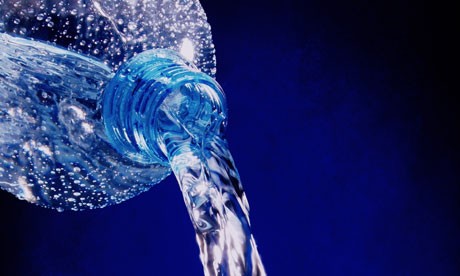Staying Hydrated
Staying hydrated in the bush, be it tramping, hunting or day-walking is both a comfort and a safety issue. Having chapped lips, a ‘dry’ throat and the beginnings of a headache while trying to enjoy the wonders of NZ’s native bush isn’t fun. Get to the point where your decisions are getting impaired, and your body is starting to shut down, and you have a major problem. Water can almost be considered the lubrication of the body. It lubricates and cushions joints, protecting your spinal cord and other, delicate tissues. It helps maintain your core temperature and it acts as the transport mechanism to rid the body of waste through urination, defecation and sweat. Remember, our bodies are nearly made up of 60% of water, and it is important that we maintain that balance. If you need to see how important water is to living objects – just watch how quickly a plant will wilt from lack of it, and how quickly it will ‘perk up’ when it is given some water again. The ‘rule of 3’ says we can live 3 seconds without blood, 3 minutes without oxygen, 3 hours unprotected in cold or heat, 3 days without water and 3 weeks without food. Those 3 days are quickly going to get really unpleasant if you are dehydrated.
Symptoms of Dehydration
Early signs of dehydration:
- Increased thirst.
- Dry mouth and sticky saliva.
- Reduced urine output with dark yellow urine.
Symptoms of moderate dehydration:
- Extreme thirst.
- Dry appearance inside the mouth and the eyes don’t tear.
- Decreased urination, or half the number of urinations in 24 hours (usually 3 or fewer urinations). Urine is dark amber or brown.
- Lightheadedness that is relieved by lying down.
Serious time – get it sorted!
- Altered behaviour, such as severe anxiety, confusion, or not being able to stay awake.
- Faintness that is not relieved by lying down, or light-headedness that continues after standing for 2 minutes.
- Weak, rapid pulse.
- Cold, clammy skin or hot, dry skin.
- Little or no urination.
- Loss of consciousness
It’s not just water though – how salty are you?
Electrolytes, really simply put, salts, are also necessary for the optimum (or even regular) functioning of the human body. When we are sweating due to exertion, like carrying around a pack for a couple of hours, up hills, down hills, up another, down another, we are sweating out water, but also minerals and salts like sodium, potassium and chloride. These all serve important functions in the body, and if we simply start pumping in large amounts of distilled (bottled) water, then we may also start flushing out these important salts with replenishing them.
I have experienced this in the bush – drinking lots of water all day, only to get to camp in the evening with a headache. In fact, it can get to the point where it seems the more I drink the thirstier I get. After some food into me, and it starts digesting, adding salts back into my system, this can come right again.
Maintaining peak performance – get drinking!
You would be hard pressed to find any athletes that don’t understand that maintaining correct hydration levels are important. Tramping and Hunting isn’t all that different – you are exerting energy, burning fuel, and you need to keep the engine running correctly. Thankfully, it’s not really that hard to get enough fluids into you while tramping. You just need to make sure you up your water intake. It is suggested that the average male requires 3.7 litres of water per day, and the average female, 2.7. Now, think for a moment, do you get that much already? If not, you may already be in a permanent state of mild dehydration. Add onto that some exercise, sweating and exertion, and you are definitely heading towards a likely case of dehydration.
How much do I need to drink?
As soon as we start working up a sweat, our fluid intake requirements increase, somewhat dramatically. Though there are various theories on how much you should be drinking, a good guideline is between 500 mils to 1 litre additional per hour of exercise, depending on how hard you are working. Good (and simple) gauge? If you are thirsty, drink. Despite what some companies (oddly enough, selling bottled water) might tell you, the human thirst mechanism is telling you exactly what you think it is. Thirsty? Drink. Not thirsty? You can probably back off a bit. If you are out for longer than an hour, then the potential to begin depleting your electrolytes also increased. While you could take out a bottle of the heavily marketed sports drinks, which, along with the vitamins and minerals you need, also include artificial flavours and sugars, you could also just make your own, or get some of the newer products coming onto the market that have the stuff you need, and less of the stuff you don’t.



